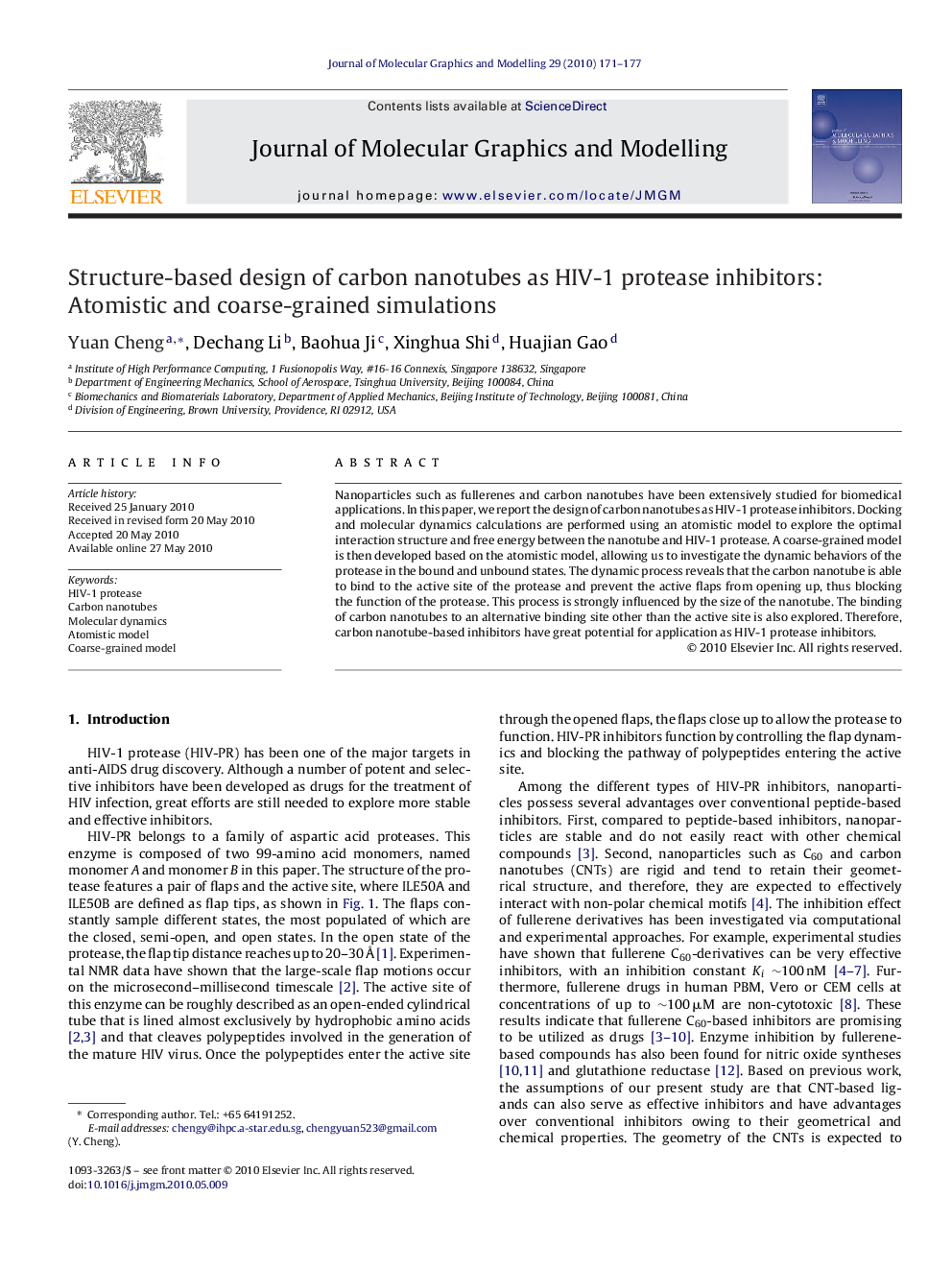| Article ID | Journal | Published Year | Pages | File Type |
|---|---|---|---|---|
| 442927 | Journal of Molecular Graphics and Modelling | 2010 | 7 Pages |
Nanoparticles such as fullerenes and carbon nanotubes have been extensively studied for biomedical applications. In this paper, we report the design of carbon nanotubes as HIV-1 protease inhibitors. Docking and molecular dynamics calculations are performed using an atomistic model to explore the optimal interaction structure and free energy between the nanotube and HIV-1 protease. A coarse-grained model is then developed based on the atomistic model, allowing us to investigate the dynamic behaviors of the protease in the bound and unbound states. The dynamic process reveals that the carbon nanotube is able to bind to the active site of the protease and prevent the active flaps from opening up, thus blocking the function of the protease. This process is strongly influenced by the size of the nanotube. The binding of carbon nanotubes to an alternative binding site other than the active site is also explored. Therefore, carbon nanotube-based inhibitors have great potential for application as HIV-1 protease inhibitors.
